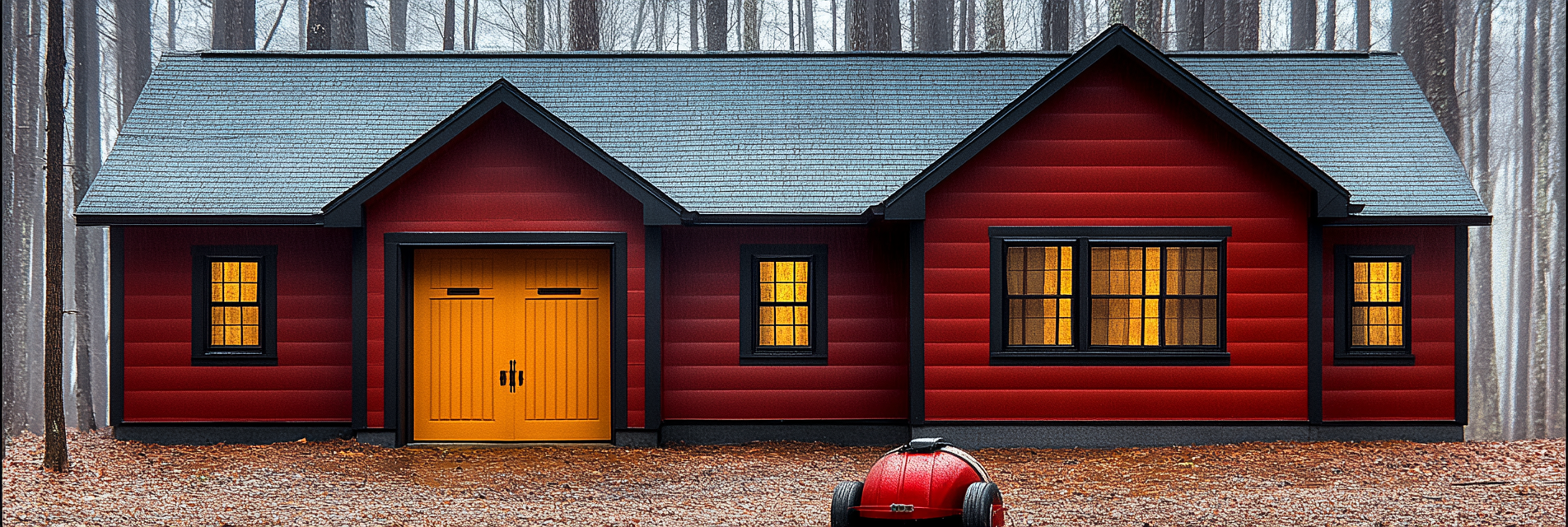Washington state is known for its varied climate, including severe windstorms and heavy rainfall. These events can lead to property damage, power outages, and even flooding. Being prepared for these conditions can help protect your home, reduce risks, and keep your family safe. This article offers detailed tips for storm preparedness, home reinforcement, and essential safety measures.
1. Strengthen Your Home Against High Winds
Taking proactive steps to secure your home helps minimize damage during a windstorm:
- Inspect and Reinforce Your Roof:
- Check for loose or damaged shingles and replace them to prevent leaks and wind damage.
- Install roof clips or hurricane straps to secure your roof to the frame of the house.
- Secure Outdoor Items:
- Anchor or store patio furniture, potted plants, garden tools, and decorations.
- Trim dead or overhanging branches that could break and damage your home during high winds.
Product Tip: Use tie-down kits or outdoor anchors to secure larger items like trampolines and sheds.
2. Protect Windows and Doors
Windows and doors are vulnerable during windstorms, so reinforcing them is essential:
- Install Storm Shutters: Use storm shutters or pre-cut plywood to cover windows.
- Reinforce Garage Doors: Secure your garage door with a brace kit to prevent it from being blown inward by strong winds.
- Weatherproof Doors: Ensure doors are weather-sealed to prevent wind-driven rain from entering your home.
3. Prevent Water Damage
Heavy rainfall can lead to water intrusion and potential flooding:
- Clean Gutters and Downspouts:
- Ensure that gutters and downspouts are clear of debris so water can flow away from your home’s foundation.
- Extend Downspouts: Use extensions or splash blocks to direct water at least 6-10 feet away from the foundation.
- Install a Sump Pump: If your basement is prone to flooding, install a sump pump with a battery backup to handle excess water.
Product Tip: The Zoeller M53 Mighty-Mate Sump Pump is a reliable option for keeping basements dry during heavy rainfall.
4. Create a Storm Emergency Kit
An emergency kit tailored for storms ensures your family has essential supplies:
- Flashlights and Batteries: Have LED flashlights and extra batteries readily available.
- Food and Water: Stock non-perishable food items and one gallon of water per person per day for at least three days.
- First Aid Kit: Include bandages, antiseptics, pain relievers, and prescription medications.
- Portable Power Bank: Maintain power banks charged for cell phones and other small electronics.
5. Prepare for Power Outages
Storms often result in power outages. Prepare for the possibility by:
- Backup Power Source: Invest in a generator or battery backup system to keep key appliances and lights functioning.
- Battery-Powered Lanterns: Use battery-operated lanterns or flameless LED candles for safe, ambient lighting.
- Keep Refrigerators Closed: Minimize opening the refrigerator and freezer to keep food cold for longer during an outage.
Safety Tip: Never use generators indoors or in enclosed spaces. Always operate them outdoors with proper ventilation to prevent carbon monoxide poisoning.
6. Maintain Communication
Staying informed and connected during a storm helps you respond effectively:
- Sign Up for Local Alerts: Register for local emergency alerts and weather updates through apps or government services.
- Battery-Operated Radio: Have a NOAA weather radio on hand for updates if cell service is disrupted.
- Keep Emergency Contact Numbers: Ensure everyone in your household has an updated list of emergency contacts, including local authorities and nearby friends or family.
7. Plan for Evacuation if Necessary
If heavy rain or wind damage compromises the safety of your home, have an evacuation plan in place:
- Know Your Route: Identify primary and secondary evacuation routes, and have a printed map in case GPS services are down.
- Prepare a Go-Bag: Pack a go-bag with essential items like clothing, toiletries, snacks, water, and important documents.
- Plan for Pets: Have carriers, food, and water ready for pets if you need to evacuate.
8. Protect Against Flooding
Flooding can result from prolonged heavy rain:
- Seal Foundation Cracks: Use waterproof sealant to prevent water from seeping into your basement or crawl space.
- Place Sandbags: Position sandbags strategically around entry points to direct water away from your home.
- Install Flood Sensors: Place water sensors in key areas such as basements and near sump pumps to receive alerts if water is detected.
Product Tip: The Honeywell Water Leak Detector sends alerts to your phone when it senses water, giving you a heads-up before flooding becomes severe.
9. Check Your Home’s Drainage System
Ensure your property’s drainage is functioning properly to reduce the risk of water damage:
- Inspect Drains and Culverts: Ensure that exterior drains and culverts are clear of debris.
- Install a French Drain: For properties with poor natural drainage, a French drain can redirect water away from the foundation.
- Grade Your Yard: Slope the ground away from your home to prevent water from pooling around the foundation.
10. Safety After the Storm
Once the storm passes, take precautions before venturing outside:
- Inspect for Damage: Check for downed power lines, damaged trees, and structural damage to your home.
- Avoid Standing Water: Floodwaters may contain contaminants, debris, or electrical hazards.
- Document Damage for Insurance: Take photos and videos of any damage for insurance claims and make a detailed list of affected items.
Conclusion
Preparing for windstorms and heavy rain involves reinforcing your home, creating an emergency kit, and staying informed. These steps help protect your home, ensure safety, and reduce stress when severe weather strikes. Paul Lindberg’s Dryer Fire Fighters emphasizes the importance of proactive measures to keep your family safe and your property secure during stormy weather in Washington state.
Serving the communities of:
Kennewick | Pasco | Richland | West Richland | Finley | Burbank | Benton City | Prosser | Grandview | Connell
As the sole certified dryer exhaust technician recognized by CSIA.org in the Tri-Cities area, Paul brings a wealth of expertise to fire prevention. His primary focus lies in addressing the root cause of many residential fires: lint buildup in dryer cavities and vents. Through rigorous inspections and thorough cleanings, Paul ensures that families and businesses can enjoy peace of mind, knowing their properties are safeguarded against fire risks.









































